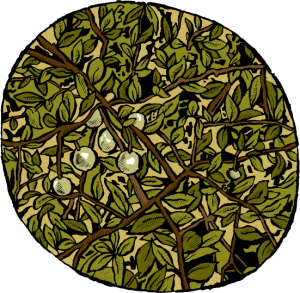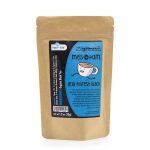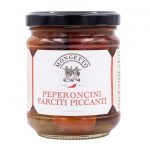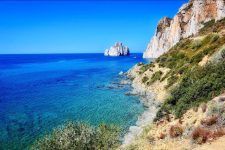Val Talks Capers (pt.1)
Val Neff-Rasmussen recently travelled to Italy on a buying trip for Zingerman’s Mail Order. This essay recounts her visit to the island of Pantelleria, source of some of the best capers in the world.
Capers: From Field to Fork (pt. 1)
I grew up in the American midwest, where a farm means lush fields of corn and soy stretching as far as the eye can see. With such expectations, a caper farm is not very impressive. Low-lying caper plants resemble scrawny green octopi sprawled across the dusty soil. Passing by, you might not realize this was a farm at all if not for the linear arrangement of the plants and the stocky stone walls outlining the field.
The capers themselves are hardly more impressive. The capers we eat are the unopened flower buds of the caper plant. On the plant, they’re little green balls at the tips of short stems sprouting upwards between coin-shaped leaves on spindly branches. They don’t look like a very promising source of food.
But they’re eaten throughout the Mediterranean, where caper plants sprout from rocky crevices that have no business growing anything, let alone anything edible. In fact, that’s how you’ll find capers most frequently: wild bushes growing in unlikely spots. They’re not farmed very often, but one of the few places you do find caper farms is the Italian island of Pantelleria.
Pante-what?
I have a colleague who discovers a lot of the foods we sell at Zingerman’s Mail Order. He’s visited Italy several times, but has never seen any of the major cities. “I’ve never been to Rome or Florence, but I have spent a lot of time in the Kentucky and Arkansas of Italy,” he jokes. If the back roads of Puglia are the Kentucky of Italy, then Pantelleria is the Guam of Italy. A tiny, remote, forgotten island, largely unknown even to most of the Italian populace. Though it’s a part of Sicily today, the nearest land to Pantelleria is actually Tunisia, some 37 miles to its west.
Pantelleria isn’t exactly a tourist destination hot spot. There are no beaches. There are no picturesque historic landmarks. There’s not even a source of fresh water. What they do have are blustery winds that gust across the island year round, uprooting tender plants and blowing your hair in your face when you pose for seaside pictures. There’s a brackish lake where you can slather yourself with silty, stinky, wonderful mud. There are secluded resorts that have hosted the likes of Madonna and Sting. They cultivate a grape called Zibibbo, which they press into sweet moscato and sweeter passito wines. And they grow lots and lots of capers.
Pantelleria is best known for its capers. (In fact, when I first learned I was going there, I was told I’d visit Caper Island. Only later did I think to ask about the real name of the place.) Capers are ubiquitous on the island: they sprout wild from boulders along the narrow paths up to the natural volcanic saunas; they pop unbidden out of chinks in the stone walls that outline the endless terraces carved into the steep mountainsides; they are carefully grown in neat rows in sun-baked fields.
Cultivating capers
It’s the cultivated capers that Pantelleria is known for. They’re the only capers with an I.G.P., or protected geographical denomination, a government-sanctioned guarantee that a product is produced in a particular area and according to particular conditions. To qualify for the I.G.P., Pantescans grow and produce their capers the same way they have for generations. They grow a special varietal of capers called Nocellara Inermis that’s unique to the island. The capers must be grown low to the ground and without any irrigation. Every caper is hand-picked, one by one.
From mid-May through August farmers pick capers daily, visiting each plant roughly every 10 days. Work starts at 4 AM and continues until around 10 AM, when the harsh Mediterranean sun becomes too hot for outdoor work. As they pick, the farmers kneel at each plant, reaching out to the hold the branches as if in a pose of supplication. They leave the tiniest buds to grow larger, collect the rest of the buds and berries, and pluck and discards any flowers in blossom. Over the course of the harvest, each mature caper plant will produce about two kilos of capers.
If the caper buds aren’t picked, they’ll blossom into dainty white flowers with delicate purple stamens. Left on the plant, the flower may go on to produce a caperberry: a small, hard, olive-shaped fruit packed chock full of seeds. The berries aren’t very popular with the Pantescans. In fact, they consider them shameful: any flower or berry is the sign of a lost opportunity for a caper, and therefore the sign of a lazy farmer. However, lately caperberries are becoming trendy in the US, making their way into swanky charcuterie spreads and hipster cocktails.
Part Two of this essay will appear tomorrow.




Zingerman’s Art for Sale